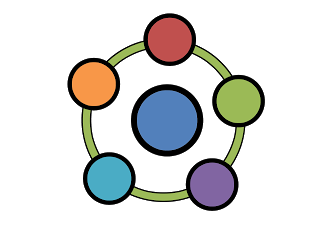“Digital Agility” Book Introduction Chapter 5: Agile Dot Connections
 Agile is not only the ability to create changes, but also the capability to adapt to changes, and create a working environment to inspire creativity. If creativity is all about connecting the dots, and agility is about shaping a customer-centric organization, and then, how can we connect the dots between agile and other desired goals of the digital organization, such as quality, flexibility, innovation, etc. Because Agile is certainly not just a “development thing.” The goals of agile transformation lie with the organizations to overall improve organizational maturity.
Agile is not only the ability to create changes, but also the capability to adapt to changes, and create a working environment to inspire creativity. If creativity is all about connecting the dots, and agility is about shaping a customer-centric organization, and then, how can we connect the dots between agile and other desired goals of the digital organization, such as quality, flexibility, innovation, etc. Because Agile is certainly not just a “development thing.” The goals of agile transformation lie with the organizations to overall improve organizational maturity.
Agility vs. Strategy: Agility within and of itself is a strategy. Agility is the business ability to adapt to changes. Agility plays its part in the business dynamic as a measure of the enterprise’s capability to assess, align, adapt, and change to innovative launches, which create new avenues for revenue and the defined speed in which to capitalize on those opportunities. In the context of business technology, the resources are demands, capabilities, applications, technologies, risks, projects, and costs, and they are organized in portfolios. Still, many organizations keep these portfolios in silos. But they need to be managed as one that is constantly linked to the business vision and adaptable goals. Agile strategy means that business needs to cost justify the benefits of their IT investments, adhere to corporate and external compliance requirements, design and develop systems that provide a unique proposition and add to competitive advantage, also manage risk effectively.
Agile vs. DevOps: Agile is a big umbrella term refers to the mindset, philosophy and the set of principles to run business or manage project. DevOps is a deployment pipeline that stresses communication, collaboration, and integration between software developers and IT professionals. DevOps is the natural result of organizations taking agility past their development processes to encompass the entire software lifecycle, including deployment and maintenance. Both Agile and DevOps are customer-centric: Agile advocates bringing the voice of the customer right into the team in order to tear down the wall in the value stream and open up a dialog with the customer, to allow greater transfer of ideas both ways. DevOps breaks the invisible wall between development and operations, to open up a dialog and optimize the whole process in ways that perhaps were not possible before. Agile involves the customer in the development process to lower the risks, and DevOps involves the operation and test to streamline the test and deployment of the software, thus, further involving the customer and potentially lowering the risk even more.
 Agility vs. Quality: Agility is targeted for enhancing business on-demand. Quality is a function of scope, budget and resources. Agility is a model of performance without sacrificing the basic modularity of the business functions. Thus, the better the management control on delivery, the better the quality and vice versa. That’s why Agile approach involves users early in a process of creation and uses them continuously to assure quality. Agility should not be translated to sacrificing planning, management guidelines or life cycle of processes, etc. Remove the obstacles to quality, clearly describe what quality looks like, and practice the activities that produce quality results.
Agility vs. Quality: Agility is targeted for enhancing business on-demand. Quality is a function of scope, budget and resources. Agility is a model of performance without sacrificing the basic modularity of the business functions. Thus, the better the management control on delivery, the better the quality and vice versa. That’s why Agile approach involves users early in a process of creation and uses them continuously to assure quality. Agility should not be translated to sacrificing planning, management guidelines or life cycle of processes, etc. Remove the obstacles to quality, clearly describe what quality looks like, and practice the activities that produce quality results. There are more dot connections introduced in this chapter. Agile is a set of principles, and the principles are abstract to apply to vary circumstances when heading to the future. And agile has to be re-adjusted at different organization levels, Through connecting the wide dots between agility and other business goals, organizations can orchestrate their agile journey in a structured way and reap business benefits for the long term. Follow us at: @Pearl_Zhu
Published on June 17, 2016 23:46
No comments have been added yet.



